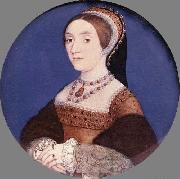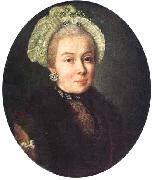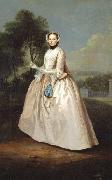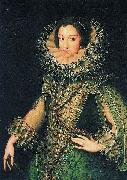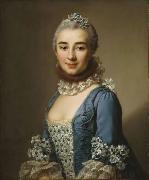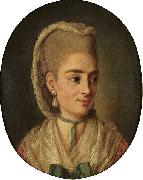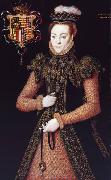Wholesale Oil Painting No Minimum |
|||||||||||
|
|
|||||||||||

|
|||||||||||
|
|
|
||||||||
HOLBEIN, Hans the YoungerGerman painter (b. 1497, Augsburg, d. 1543, London). Hans Holbein the Younger, born in Augsburg, was the son of a painter, Hans Holbein the Elder, and received his first artistic training from his father. Hans the Younger may have had early contacts with the Augsburg painter Hans Burgkmair the Elder. In 1515 Hans the Younger and his older brother, Ambrosius, went to Basel, where they were apprenticed to the Swiss painter Hans Herbster. Hans the Younger worked in Lucerne in 1517 and visited northern Italy in 1518-1519. On Sept. 25, 1519, Holbein was enrolled in the painters' guild of Basel, and the following year he set up his own workshop, became a citizen of Basel, and married the widow Elsbeth Schmid, who bore him four children. He painted altarpieces, portraits, and murals and made designs for woodcuts, stained glass, and jewelry. Among his patrons was Erasmus of Rotterdam, who had settled in Basel in 1521. In 1524 Holbein visited France. Holbein gave up his workshop in Basel in 1526 and went to England, armed with a letter of introduction from Erasmus to Sir Thomas More, who received him warmly. Holbein quickly achieved fame and financial success. In 1528 he returned to Basel, where he bought property and received commissions from the city council, Basel publishers, Erasmus, and others. However, with iconoclastic riots instigated by fanatic Protestants, Basel hardly offered the professional security that Holbein desired. In 1532 Holbein returned to England and settled permanently in London, although he left his family in Basel, retained his Basel citizenship, and visited Basel in 1538. He was patronized especially by country gentlemen from Norfolk, German merchants from the Steel Yard in London, and King Henry VIII and his court. Holbein died in London between Oct. 7 and Nov. 29, 1543. With few exceptions, Holbein's work falls naturally into the four periods corresponding to his alternate residences in Basel and London. His earliest extant work is a tabletop with trompe l'oeil motifs (1515) painted for the Swiss standard-bearer Hans Baer. Other notable works of the first Basel period are a diptych of Burgomaster Jakob Meyer zum Hasen and his wife, Dorothea Kannengiesser (1516); a portrait of Bonifacius Amerbach (1519); an unsparingly realistic Dead Christ (1521); a Madonna and Child Enthroned with Two Saints (1522); several portraits of Erasmus, of which the one in Paris (1523 or shortly after), with its accurate observation of the scholar's concentrated attitude and frail person and its beautifully balanced composition, is particularly outstanding; and woodcuts, among which the series of the Dance of Death (ca. 1521-1525, though not published until 1538) represents one of the high points of the artist's graphic oeuvre. Probably about 1520 Holbein painted an altarpiece, the Last Supper, now somewhat cut down, which is based on Leonardo da Vinci's famous painting, and four panels with eight scenes of the Passion of Christ (possibly the shutters of the Last Supper altarpiece), which contain further reminiscences of Italian painting, particularly Andrea Mantegna, the Lombard school, and Raphael, but with lighting effects that are characteristically northern. His two portraits of Magdalena Offenburg, as Laïs of Corinth and Venus with Cupid (1526), |
||||||||
|
|
||||||||
Portrait of an Unknown Lady
Portrait of an Unknown Lady Painting ID:: 63722 |
1541 Vellum mounted on playing card, diameter 5,1 cm Royal Collection, Windsor The first portrait miniatures were produced in France, their precursors being the small circular works commissioned by Francis I to celebrate the victory of Marignano in 1515. Jean Clouet was among the early practitioners of this format, which seems to have arrived in England by 1526 in the form of French royal portraits. Ten years elapsed before Holbein's contribution, but his work marks an immediate advance over the productions of earlier native practitioners like Lucas Horenbout. The small scale and different medium - vellum mounted on playing card (and termed `miniature' because of the lead, Latin minium, used in the paint) did nothing to hamper Holbein's sturdy realism. The identity of the lady is uncertain - the Romantic view of the 1840s judged it to be a portrait of Henry VIII's tragic fifth wife, Catherine Howard, executed for alleged adultery, although no ascertainable portrait of her exists elsewhere. What is certain is that Holbein's powers of characterization lost nothing in the confined space. Features of his late style include the clarity and simplicity of the background, often eschewing even the standard biographical information so as to maintain as direct a perception of the sitter as possible.Artist:HOLBEIN, Hans the Younger Title: Portrait of an Unknown Lady Painted in 1501-1550 , German - - painting : portrait 1541 Vellum mounted on playing card, diameter 5,1 cm Royal Collection, Windsor The first portrait miniatures were produced in France, their precursors being the small circular works commissioned by Francis I to celebrate the victory of Marignano in 1515. Jean Clouet was among the early practitioners of this format, which seems to have arrived in England by 1526 in the form of French royal portraits. Ten years elapsed before Holbein's contribution, but his work marks an immediate advance over the productions of earlier native practitioners like Lucas Horenbout. The small scale and different medium - vellum mounted on playing card (and termed `miniature' because of the lead, Latin minium, used in the paint) did nothing to hamper Holbein's sturdy realism. The identity of the lady is uncertain - the Romantic view of the 1840s judged it to be a portrait of Henry VIII's tragic fifth wife, Catherine Howard, executed for alleged adultery, although no ascertainable portrait of her exists elsewhere. What is certain is that Holbein's powers of characterization lost nothing in the confined space. Features of his late style include the clarity and simplicity of the background, often eschewing even the standard biographical information so as to maintain as direct a perception of the sitter as possible.Artist:HOLBEIN, Hans the Younger Title: Portrait of an Unknown Lady Painted in 1501-1550 , German - - painting : portrait |
|||||||
|
|
||||||||
Aleksey Antropov(Russian: 25 March [O.S. 14 March] 1716 - 23 June [O.S. 12 June] 1795) was a Russian barocco painter active primarily in St. Petersburg, where he was born and died. He also worked in Moscow and frescoed churches in Kiev. His preferred medium was oil, but he also painted miniatures and icons. Alexei was born to a family of government official working in Armory and in the Department of Building (kantselyatiya stroeniy). Since 1732 Alexei also working at the same department under his relative A. Matveyev, since 1739 he is a member of the painting team (zhivopisnaja komanda) of the Department under Ivan Vishnyakov. As the member of the team Alexei took part in fresoeing of Summer Palace, Winter Palace, Anichkov Palace and other buildings of Saint Petersburg. He also studied portrait art from the court painter Louis Caravaque of France. In 1749 Alexei received the rank of the Painter's apprentice (zhivopisniy podmasterye) and in the end of 1750ies the rank of the Master Painter (zhivopisniy master). In 1752-1755 he worked on the interiors of the St Andrew's Church of Kiev. He supervised the installation of the iconostasis, frescoed cupolas and walls. The most prominent of his frescoes in the church is the Last Supper in the altar. He started to paint portraits before his Kiev period. The earliest known portraits of his are portraits of Elizabeth of Russia. He did not met his model but based the paintings on the works of his teacher, Louis Caravaque. Unknown lady, 1760iesIn 1755-1757 he worked in Moscow frescoeing the Golovkin palace. Here he met prince Ivan Shuvalov who supported Antropov's works for the rest of his life. In 1757 - 1759 Antropov returned to Saint-Petersburg and learned art from court painter Pietro Rotari of Italy. Historians consider his portrait of A.M. Izmaylova to be a sort of a graduation work. The 1760ies were probably the most productive period of the artist. He painted many good portraits among the Portrait of Ataman Krasnoschekov, Portrait of Rumyantseva. Ivan Shuvalov planned to move him to Moscow, so Antropov could teach art the Moscow University. For some reason this plan was canceled and Antropov instead got the job at the Synod of the Russian Orthodox Church, there he supervised icon painting, decorating of the churches, drew the portraits of church hierarchs and supervised art students. Among his apprentices was Dmitry Levitzky, who actually lived in the house of his teacher. In 1762 Peter III of Russia became the new Emperor. Antropov soon became his favorite painter. For the six month of Peter III rule Antropov painted at least four of his portraits. After the palace revolt the new Emperess, Catherine II was of much lower opinion of the talents of Antropov. At that time the artists appreciated the soft combinations of colors and some sort of a fine flattering on the ceremonial portraits. |
||||||||
|
|
||||||||
|
|
Portrait of an Unknown Lady
Portrait of an Unknown Lady Painting ID:: 75858 |
1760s
Oil on canvas
cjr 1760s Oil on canvas cjr |
||||||
|
|
||||||||
Arthur Devis1712-1787 English By 1728 he had left Preston, and the following year he was working in London for the Flemish topographical and sporting painter Peter Tillemans. There he specialized in landscape painting and copying various works in Tillemans studio after Marco Ricci, Giovanni Paolo Panini and Jan van Bloemen. Devis earliest known commission, Hoghton Towers from Duxon Hill, Lancashire (1735; priv. col., see 1983 exh. cat., no. 3), painted for Sir Henry Hoghton during a trip to Preston in 1734-5, shows Tillemans influence in its attention to detail and the use of thin, transparent paint. Thomas Lister with his Family (c. 1738; Chicago, IL, A. Inst.) demonstrates a similar interest in landscape, featuring the family group in Gisburn Park, Lancs. Devis had returned to London by 1742 and established himself as a painter of conversation pieces, with a studio in Great Queen Street. Roger Hesketh with his Family is typical of his work at this time; it shows how Devis transformed the intimacy of a Dutch 17th-century genre scene into an elegant interior with the group of sitters connected by formal, schematic gestures. Roger Hesketh stands apart, in a tastefully contrived pose, his legs crossed and right arm thrust inside his waistcoat. His son, Fleetwood, stands with his hand resting on a dog next to his wife, who is seated with an infant on her lap. The adjacent telescope, globe and marine paintings are intended to advertise Hesketh interest in astronomy and travel. |
||||||||
|
|
||||||||
|
|
Portrait of an unknown Lady
Portrait of an unknown Lady Painting ID:: 76489 |
Date from 1750(1750) until 1755(1755)
Medium Oil on canvas
Dimensions 610 ?? 406 cm (240.2 ?? 159.8 in)
cyf Date from 1750(1750) until 1755(1755) Medium Oil on canvas Dimensions 610 ?? 406 cm (240.2 ?? 159.8 in) cyf |
||||||
|
|
||||||||
Rodrigo de VillandrandoRodrigo de Villandrando (1588 - December 1623) was a court painter during the reign of Philip III of Spain. He worked in the tradition of Alonso Senchez Coello and Juan Pantoja de la Cruz. His death opened the road to court for the young painter Diego Velezquez from Sevilla. |
||||||||
|
|
||||||||
|
|
Portrait of an Unknown Lady
Portrait of an Unknown Lady Painting ID:: 80337 |
1610s
Medium Oil on canvas
cyf 1610s Medium Oil on canvas cyf |
||||||
|
|
||||||||
Alexandre Roslin1718-1793 |
||||||||
|
|
||||||||
|
|
Portrait of an unknown Lady
Portrait of an unknown Lady Painting ID:: 80717 |
1753(1753)
Medium Oil
cyf 1753(1753) Medium Oil cyf |
||||||
|
|
||||||||
Per Krafft the Elder(16 January 1724, Arboga - 7 November 1793, Stockholm) was a Swedish portraitist. He was the father of the artists Per Krafft the Younger and Wilhelmina Krafft. |
||||||||
|
|
||||||||
|
|
Portrait of an unknown lady
Portrait of an unknown lady Painting ID:: 82201 |
Date 18th century
Medium Oil on canvas
Dimensions 51.5 x 43 cm (20.3 x 16.9 in)
cjr Date 18th century Medium Oil on canvas Dimensions 51.5 x 43 cm (20.3 x 16.9 in) cjr |
||||||
|
|
||||||||
Hans EworthFlemish Northern Renaissance Painter, active 1540-1573 Flemish painter, active in England. Jan Euworts was listed in 1540 as a freeman of the Guild of St Luke in Antwerp, but by 1545 he had moved to England, where until 1571 his name, spelt in a wide variety of ways (e.g. Eeworts, Eottes, Euertz, Evance, Eworts, Ewotes, Ewout, Ewoutsz., Eywooddes, Hawarde, Heward, Huett etc), appeared in numerous naturalization, tax and parish documents. About 35 paintings are generally attributed to him, consisting primarily of dated portraits of the English gentry and nobility. The majority are signed with the monogram HE, which led to their being attributed to the Flemish painter Lucas de Heere during the 18th and 19th centuries. Cust reattributed the paintings to Eworth on the basis of an inventory (1590) of the collection of John, 1st Baron Lumley, in which three monogrammed portraits were listed as being by Haunce Eworth |
||||||||
|
|
||||||||
|
|
Portrait of an unknown lady
Portrait of an unknown lady Painting ID:: 86563 |
oil on panel, 38 1/2 x 24 in, 96.9 x 61 cm, Tate Gallery
Date 1565-68
cyf oil on panel, 38 1/2 x 24 in, 96.9 x 61 cm, Tate Gallery Date 1565-68 cyf |
||||||
|
|
||||||||
Hans EworthFlemish Northern Renaissance Painter, active 1540-1573 Flemish painter, active in England. Jan Euworts was listed in 1540 as a freeman of the Guild of St Luke in Antwerp, but by 1545 he had moved to England, where until 1571 his name, spelt in a wide variety of ways (e.g. Eeworts, Eottes, Euertz, Evance, Eworts, Ewotes, Ewout, Ewoutsz., Eywooddes, Hawarde, Heward, Huett etc), appeared in numerous naturalization, tax and parish documents. About 35 paintings are generally attributed to him, consisting primarily of dated portraits of the English gentry and nobility. The majority are signed with the monogram HE, which led to their being attributed to the Flemish painter Lucas de Heere during the 18th and 19th centuries. Cust reattributed the paintings to Eworth on the basis of an inventory (1590) of the collection of John, 1st Baron Lumley, in which three monogrammed portraits were listed as being by Haunce Eworth |
||||||||
|
|
||||||||
|
|
Portrait of an Unknown Lady
Portrait of an Unknown Lady Painting ID:: 92191 |
oil on wood, support: 597 x 483 mm, Tate Gallery, T00606
Date 1557(1557)
cyf oil on wood, support: 597 x 483 mm, Tate Gallery, T00606 Date 1557(1557) cyf |
||||||
|
|
||||||||
|
Hans Eworth Flemish Northern Renaissance Painter, active 1540-1573 Flemish painter, active in England. Jan Euworts was listed in 1540 as a freeman of the Guild of St Luke in Antwerp, but by 1545 he had moved to England, where until 1571 his name, spelt in a wide variety of ways (e.g. Eeworts, Eottes, Euertz, Evance, Eworts, Ewotes, Ewout, Ewoutsz., Eywooddes, Hawarde, Heward, Huett etc), appeared in numerous naturalization, tax and parish documents. About 35 paintings are generally attributed to him, consisting primarily of dated portraits of the English gentry and nobility. The majority are signed with the monogram HE, which led to their being attributed to the Flemish painter Lucas de Heere during the 18th and 19th centuries. Cust reattributed the paintings to Eworth on the basis of an inventory (1590) of the collection of John, 1st Baron Lumley, in which three monogrammed portraits were listed as being by Haunce Eworth Portrait of an Unknown Lady oil on wood, support: 597 x 483 mm, Tate Gallery, T00606 Date 1557(1557) cyf |
||||||||
|
|
||||||||
|
Prev Next
|
||||||||
|
|
||||||||
|
Related Paintings to Hans Eworth :. |
||||||||
|
|
||||||||
|
CONTACT US |
